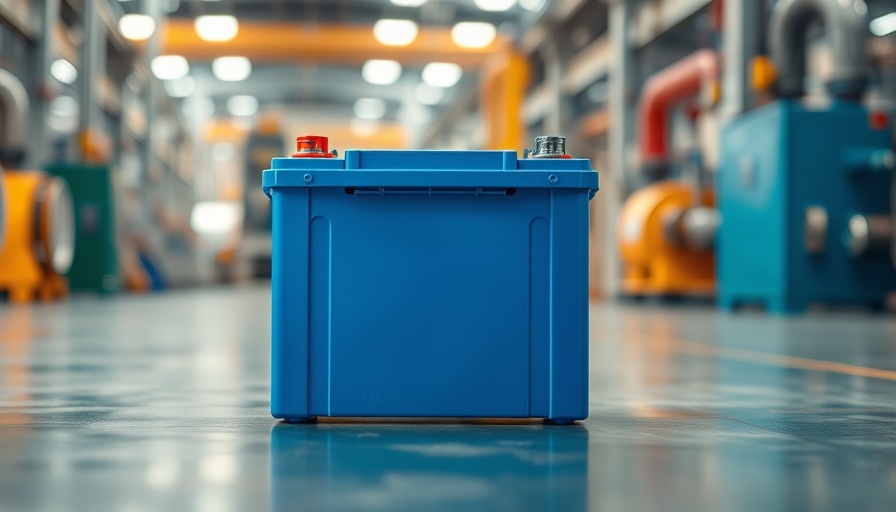
A Critical Moment for American Battery Manufacturing
This week, the landscape of American battery manufacturing faced a significant upheaval as Natron, a sodium-ion startup, concluded its operations after over a decade of effort to bring its innovative technology to fruition. Although the firm had garnered $25 million in orders for a new manufacturing facility in Michigan, it ground to a halt primarily due to delays in obtaining essential UL certification. This closure is not merely an isolated incident; it represents the broader challenges besieging U.S. battery production, highlighting regulatory constraints and the urgent need for a consolidated industrial policy that can facilitate the rapid advancement of the sector.
The Importance of Certification in Startups
Natron's experience elucidates a critical concern for technology startups seeking to navigate their way through complex certification processes. The UL certification, which ensures adherence to required safety and performance standards, is a lengthy endeavor that can lead to severe financial strain for companies. Many investors tend to withdraw during extended delays, exacerbating the already precarious position of companies like Natron. The fallout from Natron's failure to secure necessary approvals underscores how these bureaucratic barriers not only hinder individual companies but also threaten the livelihoods of countless workers and the broader economic landscape.
Sodium-Ion Batteries: Potential vs. Reality
Despite promising cost benefits over lithium-ion batteries due to the widespread availability of sodium, market realities can be harsh. Recently, lithium carbonate prices plummeted by an astonishing 90% over two years, which has dimmed the competitive advantages that sodium-ion technologies once held. This dynamic sets a difficult stage for Natron and other innovator companies, who must contend with volatile market conditions and the potential of being overshadowed by established players who wield significant market power.
Lessons from Global Battery Manufacturing Trends
Natron's challenges echo a broader trend within the industry. Companies like Powin in Oregon filed for Chapter 11 bankruptcy, largely because they struggled to source crucial components domestically. Similarly, Northvolt, once heralded as Europe's best chance at cultivating a thriving battery sector, also collapsed while trying to scale production outside of Asia. The success of Asian battery giants with their extensive supply chains and deep-rooted manufacturing expertise highlights just how steep the hill is for new entrants attempting to carve out a space in this competitive market.
The Future of U.S. Battery Manufacturing: Insights and Predictions
Looking forward, the closure of Natron serves as a wake-up call regarding the fragile state of American battery manufacturing. In light of the turmoil in the sector, it becomes imperative to establish a supportive environment marked by coherent policies, expedited certification processes, and sufficient investment to nurture innovation. The lessons extracted from Natron's journey can inform future efforts and, hopefully, move the U.S. towards a more resilient battery manufacturing ecosystem.
Innovative Approaches to Overcome Manufacturing Challenges
In order to propel the U.S. battery industry forward, embracing advanced technologies is essential. Innovations like machine-led growth, operational AI, and edge computing can streamline processes and enhance production efficiency. By integrating these technologies into the supply chain and manufacturing processes, companies can better position themselves to adapt to market fluctuations and move toward sustainable practices that bolster resilience and competitiveness in the face of adversity.
Taking Action for a Sustainable Battery Ecosystem
The challenges highlighted by Natron's closure underline the collective responsibility of industry leaders, policymakers, and stakeholders. It is critical to champion initiatives that enhance regulatory support and funding for emerging technologies. Such actions can foster an environment ripe for innovation that supports not only the battery industry but the entire economic landscape.
 Add Row
Add Row  Add Element
Add Element 



Write A Comment